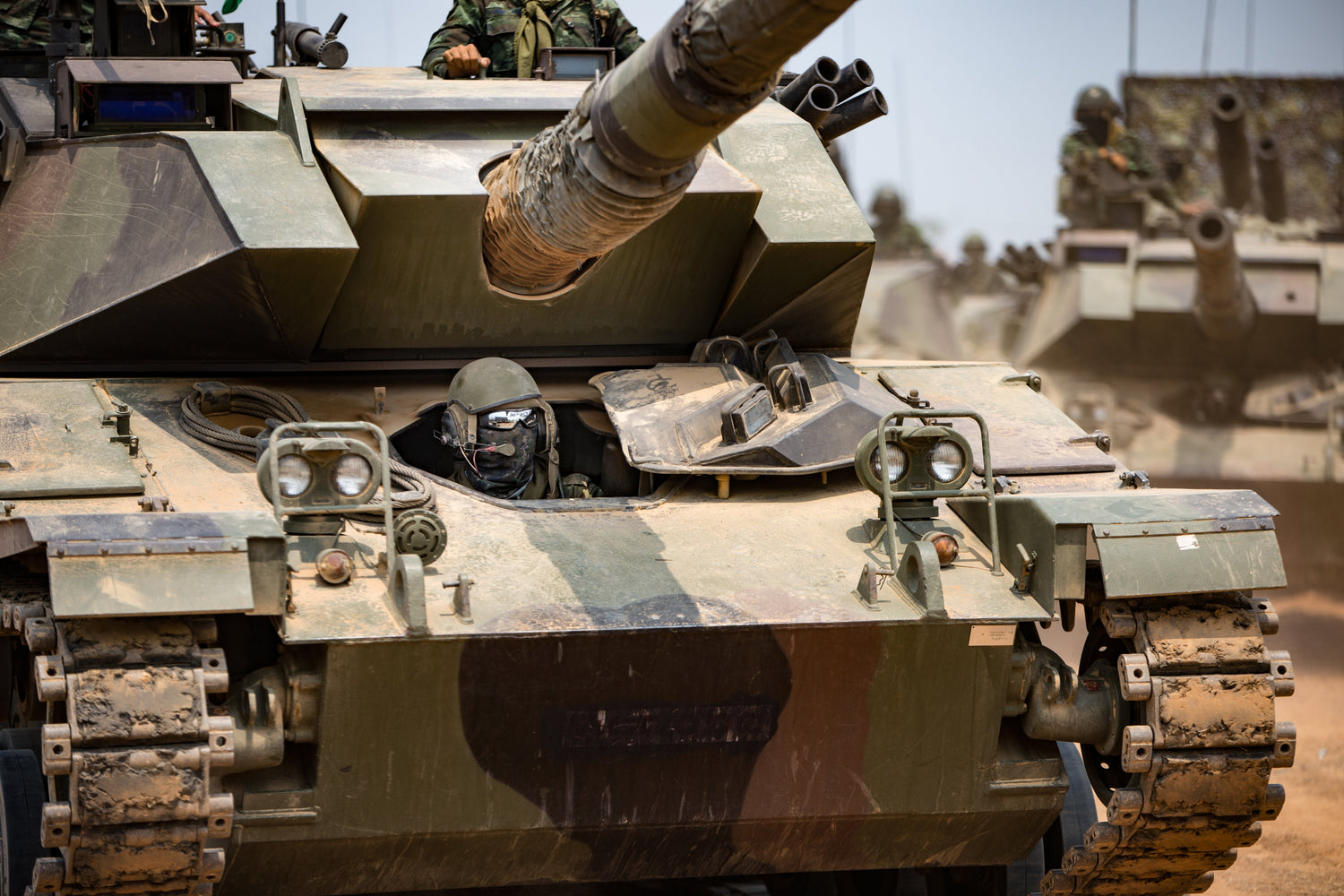Military camouflage has always played a crucial role on the battlefield. From the first camouflage paints applied to tanks during World War I to today's pixelated patterns, the goal remains the same: to make military vehicles as invisible as possible to the enemy.
However, thanks to advances in smart materials, nanotechnologies, and metamaterials, camouflage paint no longer simply hides a vehicle in a specific environment.
It can now adapt, transform, and even manipulate light to provide near-total invisibility.
In this article, we will explore the latest advanced camouflage technologies, their military applications, and their strategic implications for future conflicts.
1. Smart Paints: Real-Time Adaptation
Adaptive Polymers and Electrochromic Materials
Imagine a military vehicle that can instantly change color and pattern depending on its environment. This is exactly what adaptive polymers and electrochromic surfaces allow. These materials react to external stimuli such as light, temperature, and electricity to alter their appearance in real time.
How Does It Work?
Electrochromic polymers are materials capable of changing their opacity and color when exposed to an electric current. They are already used in some civilian applications such as:
-
✔ Smart tinted windows in high-end cars
-
✔ Flexible displays in future smartphones and tablets
Military Applications
In the military field, this technology can be used to:
-
Match a vehicle’s color to the terrain (desert, forest, snow)
-
Create dynamic patterns to confuse enemy cameras and sensors
-
Reduce optical signatures to avoid satellite detection
Challenges to Overcome
-
❌ Energy Consumption: These paints require a continuous power source
-
❌ Resistance to Harsh Conditions: Surfaces must withstand shock, weather, and extreme temperatures
-
❌ High Cost: Manufacturing smart polymers remains expensive for large-scale deployment
2. Advanced Optical Camouflage: Manipulating Light
One of the most spectacular evolutions in camouflage involves manipulating light using metamaterials and transformation optics.
Metamaterials: A Revolution in Optics
Metamaterials are artificial structures that can manipulate light and electromagnetic waves in ways natural materials cannot.
The Principle of the “Invisibility Cloak”
Researchers have developed materials that bend light around an object, making it invisible to the human eye.
Military Applications
-
✔ Design stealth vehicles that evade visual and radar detection
-
✔ Develop undetectable gear for special forces
-
✔ Create portable camouflage systems for deployed soldiers
Technological Limitations
-
Metamaterials currently work best on small surfaces
-
Total invisibility is still a major technological hurdle, especially for moving objects
-
Power requirements remain a significant constraint
3. Thermal and Infrared Invisibility: Avoiding Modern Detection
Modern sensors detect the thermal signatures of vehicles and soldiers. To avoid this, several thermal camouflage solutions are under development.
Thermoregulated Coatings
These specialized paints absorb and diffuse heat in a controlled manner, preventing vehicles from standing out in infrared imaging.
Thermal Decoys
These systems generate fake heat signatures to mislead enemy sensors. They are used to:
-
Redirect infrared-guided missiles
-
Disrupt drone and satellite detection
Advantages and Constraints
-
✔ Highly effective against thermal radar
-
✔ Reduces risk of detection by enemy drones
-
❌ High production cost
-
❌ Limited by weather conditions
4. Quantum Camouflage: Toward Total Concealment
Advanced Effects and Multi-Spectral Camouflage
Quantum physics opens up revolutionary possibilities in camouflage. Some materials may hide objects across multiple electromagnetic spectra—visible, infrared, radar, and even ultraviolet.
Challenges of Quantum Camouflage
-
The instability of quantum phenomena makes this technology difficult to apply
-
High production costs and integration into mobile systems remain significant barriers
5. Strategic and Ethical Impact of Invisibility Technologies
Operational Advantages
-
✔ Reduction in military losses through better concealment
-
✔ Tactical surprise to gain an advantage over the enemy
-
✔ Absolute discretion for special operations
Ethical Issues and Risk of Escalation
-
❌ Risk of asymmetric conflicts where tech-superior forces dominate less advanced opponents
-
❌ Lack of transparency in warfare
-
❌ Unclear legal frameworks: how can such stealth technologies be regulated?
Conclusion: The Future of Military Camouflage
Camouflage paints today go far beyond color. They are now part of an integrated stealth strategy involving light, heat, and even quantum phenomena.
While many challenges remain, these innovations could redefine modern warfare by making vehicles and soldiers nearly invisible. To learn more about military camouflage, visit nutsof.com.
FAQ: Everything You Need to Know About Advanced Camouflage
1. What are the most advanced types of military camouflage paint?
Electrochromic paints, adaptive polymers, and thermoregulated coatings are among the most cutting-edge solutions.
2. Can a vehicle truly become invisible?
Not completely, but metamaterials and advanced optics allow for very effective partial concealment.
3. How can thermal detection be avoided?
With thermoregulated coatings and infrared decoys that trick enemy sensors.
4. Are there regulations for these technologies?
Currently, very few, but international law may evolve to address these new stealth weapons.
Best regards,
The Nutsof Team
Advanced Camouflage & Defense Solutions
🌐 www.nutsof.com
Follow us on Facebook and Instagram for the latest in advanced military camouflage technologies.


